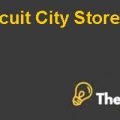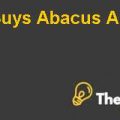
QUESTION 1
What are the origins of the zip car concept? How was it modified? How did it evolve?
The origins for the Zip Car concept came from Switzerland in the year 1987. However, one of the co-founder of the business model and the core concept for Zip Car in Berlin, Germany and that was in the year 1999. This co-founder had then also thought that the Zip Car concept might also work in most of the urban areas of the United States of America. The main purpose of the Zip Car concept was environment friendly, money saving and making the whole idea more convenient for its customers was at the core of the Zip Car concept.
This purpose and the objectives of the company did not change much between the year 1987 and 1999 and between this time periods the whole process and the purpose had remained the same. This purpose of the company had also been sustained by the owners of the company through the name of the company. Danielson and Chase knew the importance of choosing the right name for the company. Therefore, they chose a name that was friendly, affordable, easy to use, and convenient and also had social value. However, there were a lot of improvements introduced due to technological enhancements. The model allowed using the Zip Car and the interfaces more easily and made it user friendly and more convenient.
The car could be opened and then closed with just one single simple pin. Furthermore, the car service was also improved as a result of the wireless services. The car was then able to develop certain abilities through which the real time information could be easily received regarding the exact location of the car and the wireless services also allowed much improved data collection methods. The time to the server or the start time was also developed and the system for tracking the billing services and many other services for the Zip Car were also developed. Therefore, in this way Zip Car had evolved and it could be said that it has not seen many changes but it has adopted many improvements.
QUESTION 2
Getting started: How did the two founders overcome the “hen-and-the egg” problem with regards to investors and the venture (investors want to have some proof and see some progress e.g. developed team, product, sales, etc., but the founders needed the money to achieve all this).
The investment was the requirement to start the business and build the operations. First of all, both the founders had targeted their families and their friends in order to keep the project alive by raising the money through them. Once the model would be built, then they could go ahead and approach a real investor. They continuously focused on improving the technology and the market analysis.
When Chase had completed the initial plan, then the viability of the model was tested with one of the group of the trusted advisors and then the fund collecting process began. The company was incorporated in the year 2000 and the complete attention of Chase was set on raising the needed financing and it was in the February of the year 2000 that a formal presentation was made by Chase in order to present the complete business plan to a group of the angel investors.
Along with this, by focusing on financing, Chase was also building the infrastructure for the business. Her motive was to develop a proof of the concept so that the next financing could become easier. A total funding need of $ 1.3 million was estimated by Chase. However, in June 2000, he had again signed for a $ 25000 bridge loan. Chase and his team had worked together to build the financing by working without salary and they had also took bridge notes of $ 350000 and it was in mid of the November in 2000 that the first round of financing was closed.
QUESTION 3
Do you think the zip-car company will be successful? Why or/and why not? How do you judge the 3 aspects of the Timmons triangle (idea, team, resources)?
One of the most important aspects of a successful project or a successful business is to generate wealth for the investors and the profitability and growth for the business. The Zip Car business concept is focused on creating the low cost car rental model. The Zip Car charges its customers hourly rates instead of the daily rates and in this way the customers can lease the car for much cheaper rates. The strategic use of the business strategy and the information resources would result in a unique customer and a business experience........................
This is just a sample partial case solution. Please place the order on the website to order your own originally done case solution.












